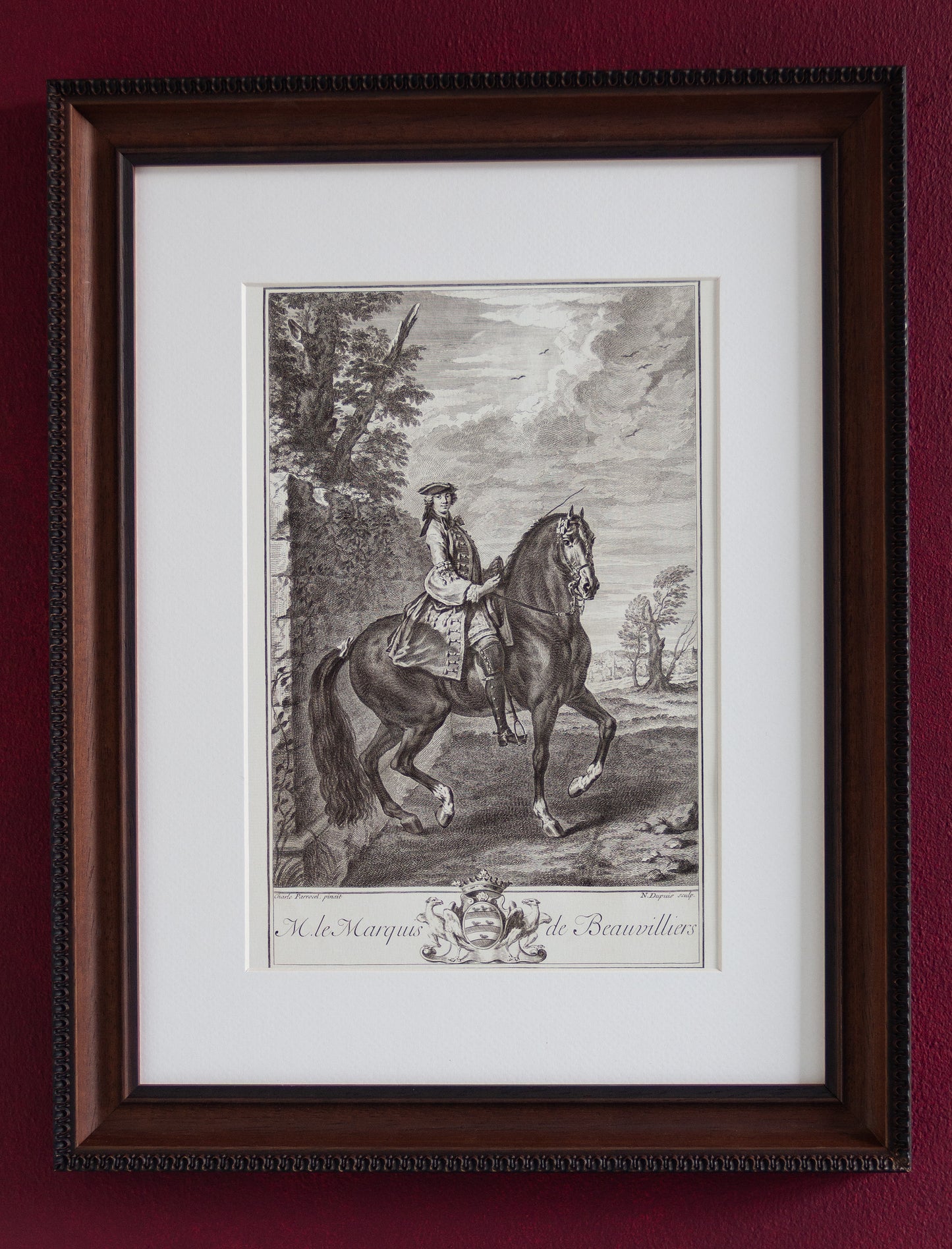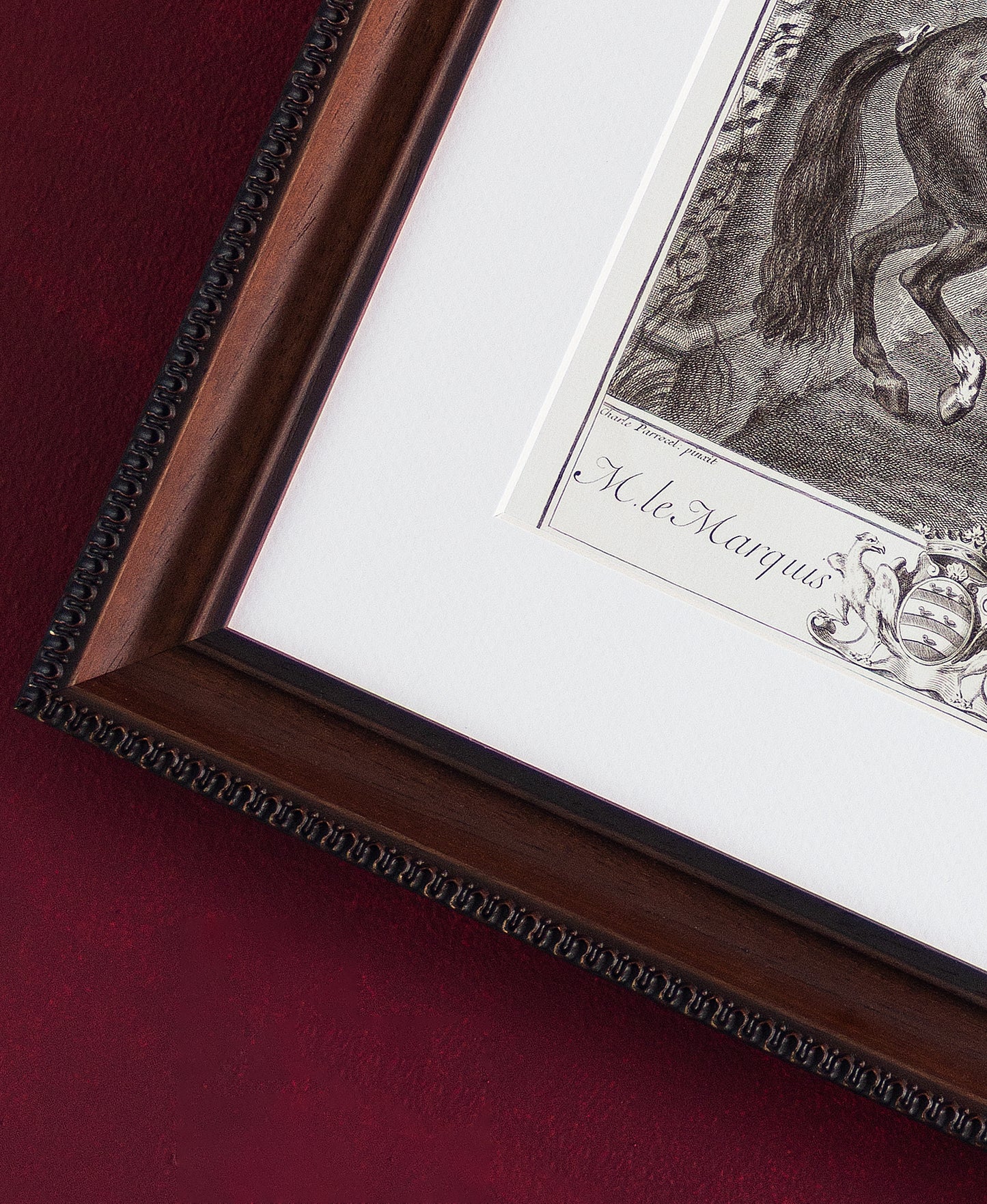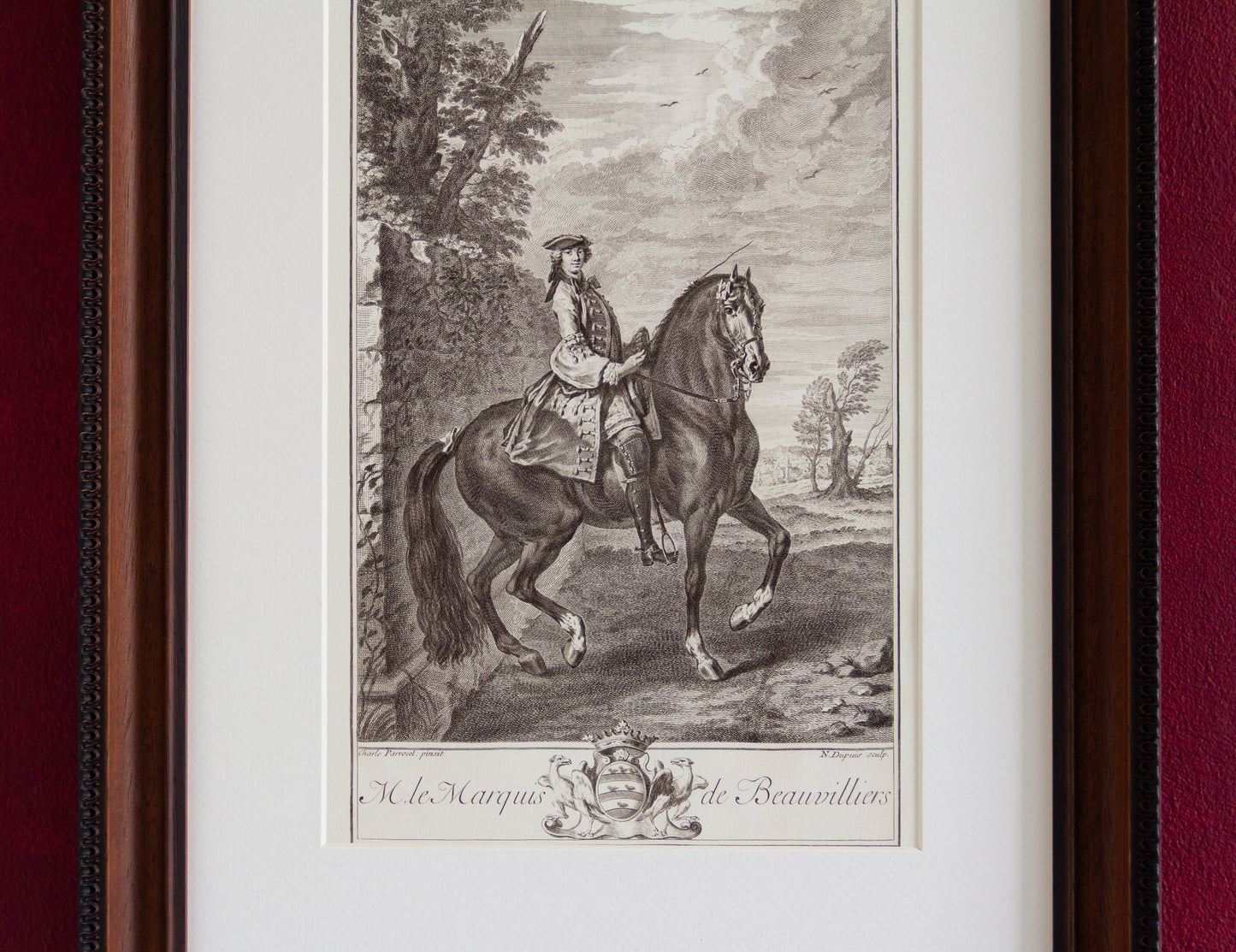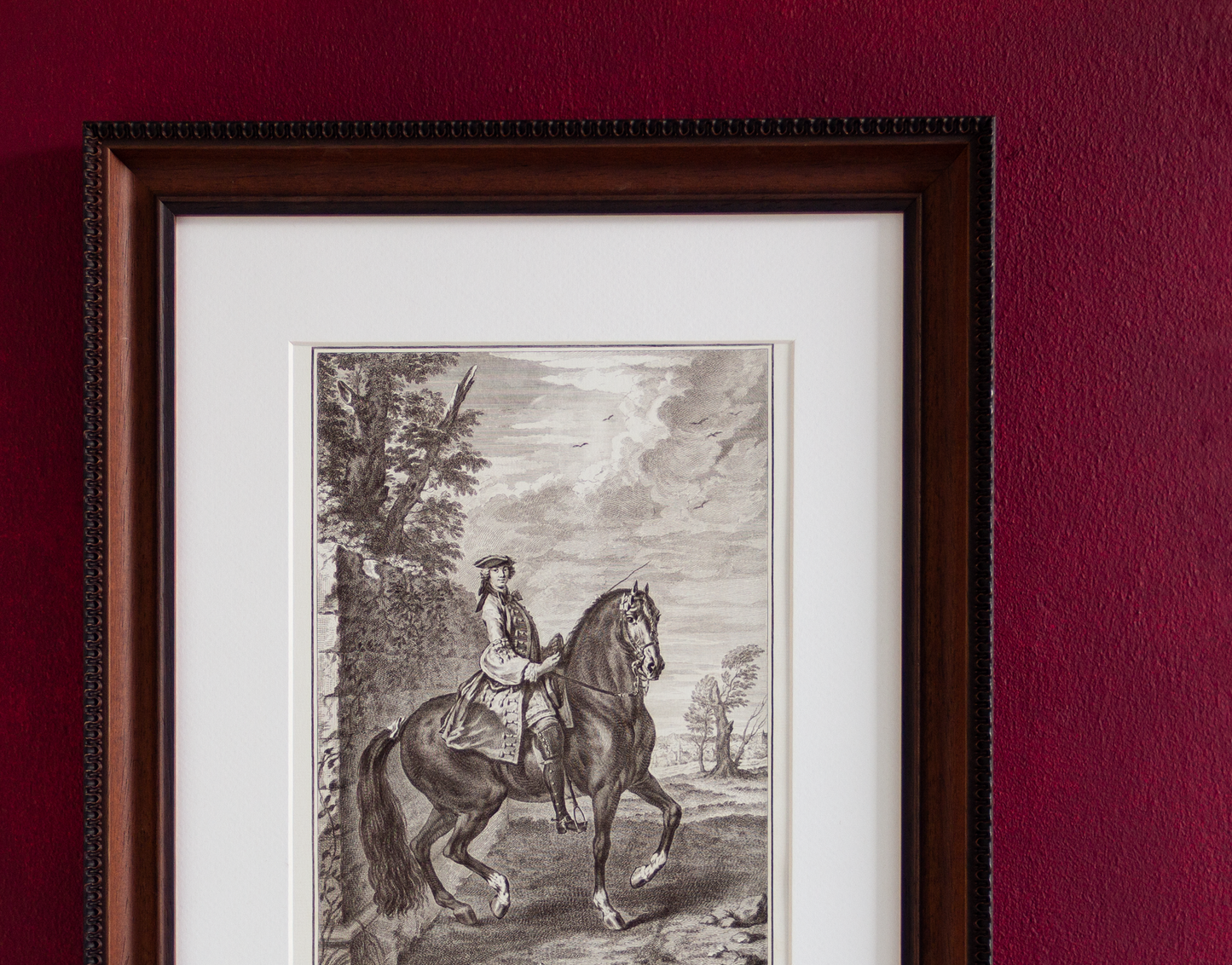De La Guérinière Print | The Renvers
De La Guérinière Print | The Renvers
The listed price is for the unframed fine art print only. Dimensions reflect the full size of the print, including any borders. The borders may appear larger or smaller than shown in product images, depending on the print size you select.
Couldn't load pickup availability
Print Quality & Materials
Print Quality & Materials
Expertly printed on luxurious 200gsm fine art paper with an elegant smooth finish, each piece is produced using a museum-grade giclée process. We use only the highest quality UV- or pigment-based inks, ensuring exceptional color depth and archival longevity: creating resistance to fading for over a century under suitable conditions.
Choosing the Right Size
Choosing the Right Size
We offer our prints in two size formats: inches and centimeters. If you’re in a region where inches are the framing standard (such as the US), we recommend selecting the inch-based sizes. For countries using the metric system, the centimeter variants are the best choice.
Our prints are designed to fit standard frame sizes, including those with or without a passe-partout (mat). For the most refined presentation, we recommend using a passe-partout, as it enhances the artwork’s visual impact.
Please note that for the common 20 x 29 cm passe-partout window, our A4 print size (21 x 29.7 cm) fits optimally.
For a 29 x 39 cm window, our 30 x 40 cm prints are the best choice.
Please note that some borders might be visible, based on the artwork. We design our products to accommodate to modern frames, but this is sometimes unavoidable based on the original dimensions of the artwork.
The renvers, referred to by François Robichon de La Guérinière as la croupe au mur (“hindquarters to the wall”), is one of the essential lateral exercises of classical dressage. Together with the shoulder-in, it forms the foundation of de La Guérinière’s systematic approach to suppleness and collection - two qualities at the heart of his training philosophy.
Rendered with subtlety and precision, this engraving captures more than a technical exercise: it reflects the careful progression, respect for the horse, and noble bearing that define classical dressage at its height. A perfect addition for those who appreciate the intellectual depth and visual harmony of baroque equitation.
More about the movement
More about the movement
In L’École de Cavalerie, de La Guérinière explains that the renvers should follow only after the shoulder-in has been well established to both sides. Unlike the travers, which places the horse’s head too much near the wall, the renvers allows for more open balance and encourages the engagement of the inside hind leg. It is to be introduced with great sensitivity: just two or three carefully ridden strides, followed by immediate praise, especially with young or inexperienced horses. When practiced regularly and in tandem with the shoulder-in, the renvers becomes a vital tool in developing a horse’s suppleness, balance, and responsiveness. This lays the groundwork for more advanced airs and movements later on.
More about the rider
More about the rider
In this elegant engraving by Charles Parrocel, we see the renvers beautifully illustrated, likely featuring the Marquis de Beauvilliers. He was the brother of the Count of St. Aignan (depicted in the passage engraving), and son of Paul de Beauvilliers (1648–1714), a prominent figure at the French court and tutor to the Duke of Burgundy — grandson of Louis XIV and father of Louis XV. The marquis may also have been brother to the nobleman thought to be represented in the canter plate.
Though little biographical detail survives about the Marquis himself, his inclusion in this collection suggests not only skill in horsemanship, but a connection to the influential circle that shaped the courtly and classical ideals of the French riding tradition.





Unlock exclusive access to upcoming collections
Be among the select few to experience our newest collection before anyone else. You can sign up to our email list to receive exclusive updates and the chance to secure your pieces early.





